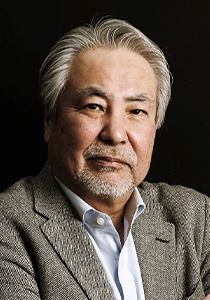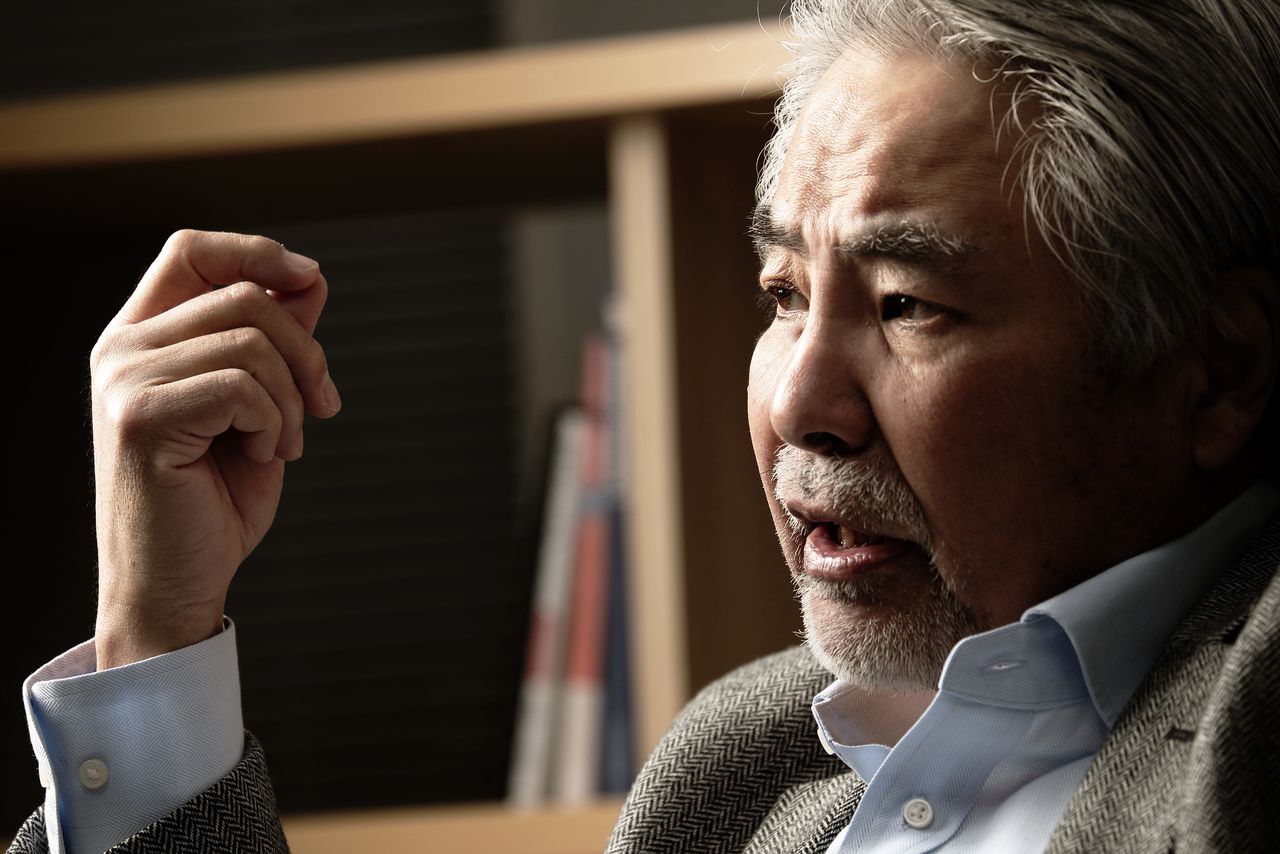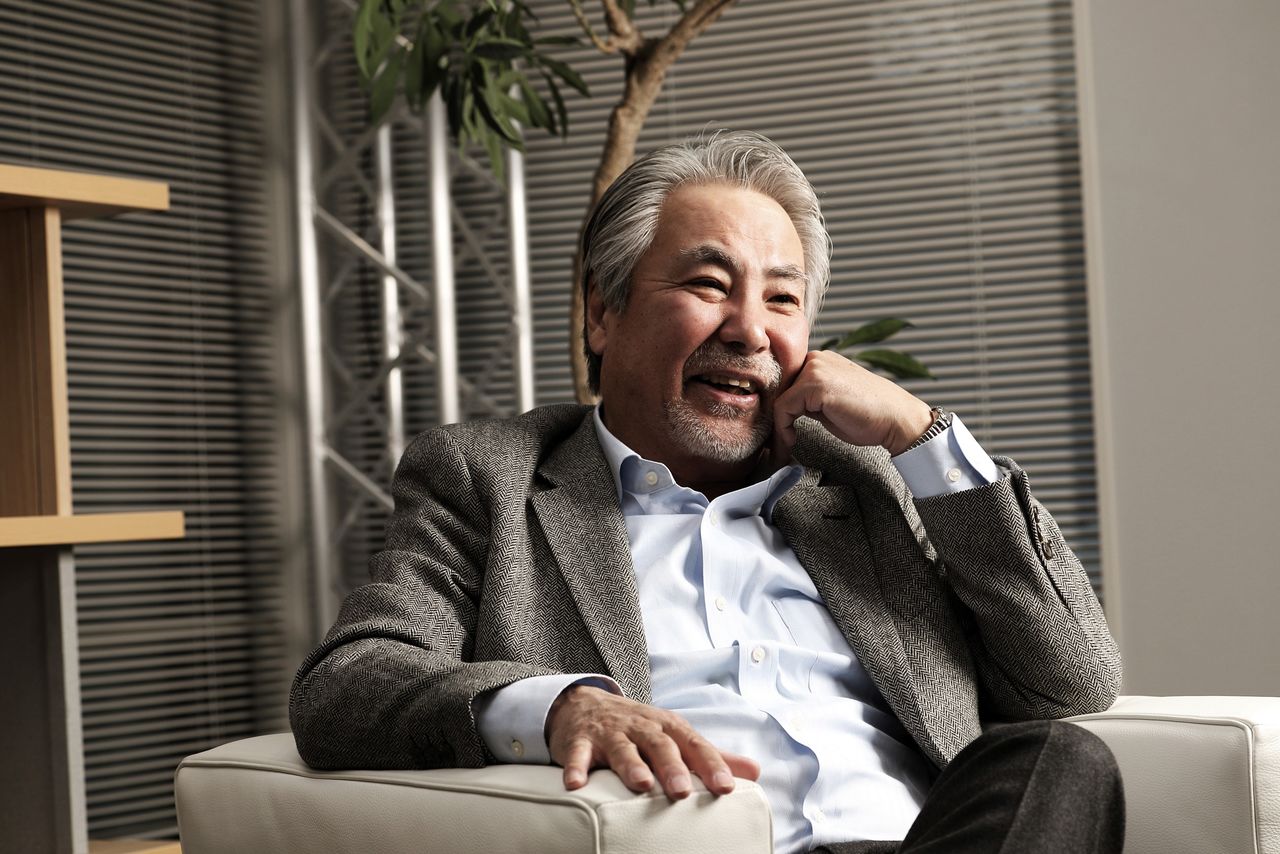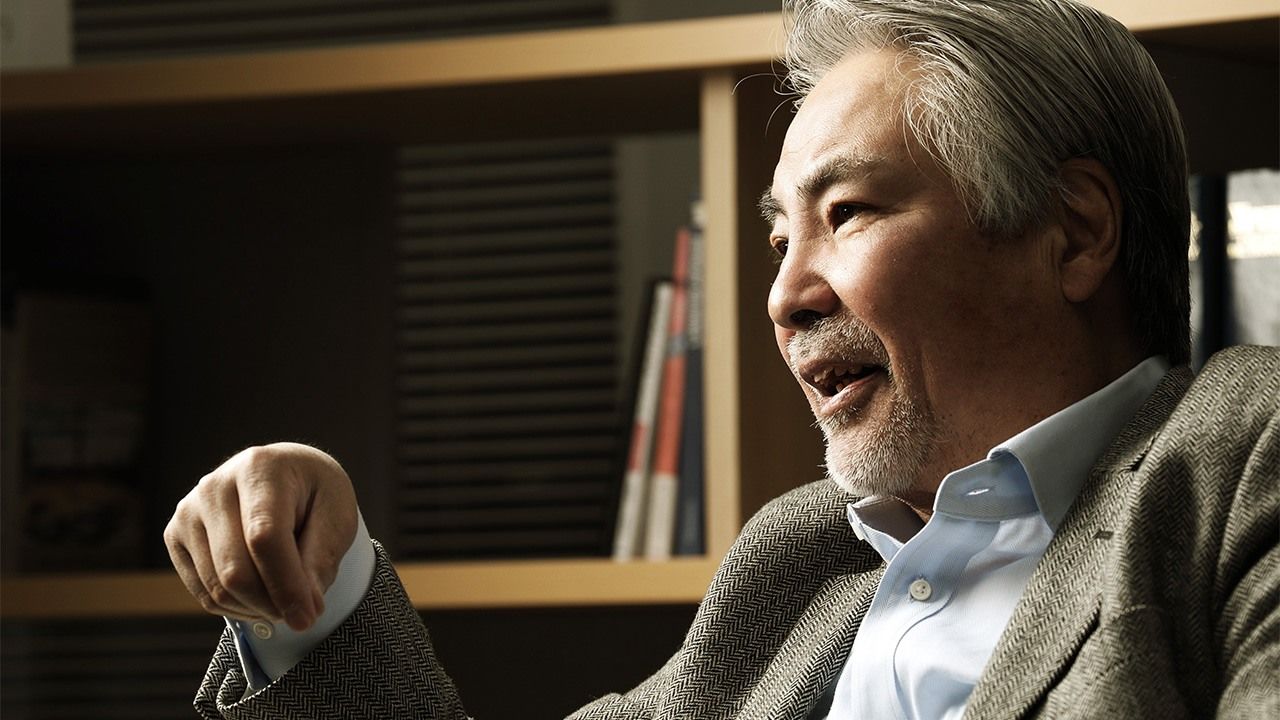
“Shinjuku Shark”: Japanese Mystery Writer Ōsawa Arimasa and the Enduring Appeal of His Hardboiled Series
Books Entertainment Culture- English
- 日本語
- 简体字
- 繁體字
- Français
- Español
- العربية
- Русский
Novelist Ōsawa Arimasa published Shinjuku-zame (trans. by Andrew Clare as Shinjuku Shark), the first installment of what would become the Samejima series, in 1990. The hardboiled novel introduced readers to Samejima, a detective for the Tokyo Metropolitan Police who traverses Shinjuku’s notorious Kabukichō district and other seedy neighborhoods in the capital in search of criminals. A loner, Samejima hunts his quarries with single-minded determination, earning him the respect and fear of the local gangsters, who dub him “the shark.”
Dokuzaru, the second work in the series, came out in 1991 and was released in English as The Poison Ape (trans. by Deborah Iwabuchi). Ōsawa published Heishi, the twelfth Japanese installment, in November 2022. We recently sat down with the prolific writer to talk about what keeps readers coming back.
A Shark’s Tale
Shinjuku Shark was a breakout hit when it was released, winning two of Japan’s top mystery prizes. Building on this success, Ōsawa cranked out new episodes in the series at regular intervals, publishing 10 before letting his foot off the gas with Kizuna kairō in 2011. The novel saw the departure of main character Samejima’s only two intimates, his boss Momoi, a section chief for the department, and his rock singer girlfriend Shō. Ōsawa says that his decision to write out Momoi and Shō opened a gaping hole in Samejima’s life—and the novel—that would take time to fill. “I couldn’t just pick up where I left off,” he recounts. More than a few fans thought it was the end of the long-running series.
It would take him nine years to release the eleventh novel, Anyaku ryōiki, which came out in 2019. With Heishi though, Ōsawa says that things progressed much more smoothly. “I wanted to make it a simple story,” he explains. “As such, the book was comparatively easy to write. The bad guy and other aspects more or less popped into my mind.”
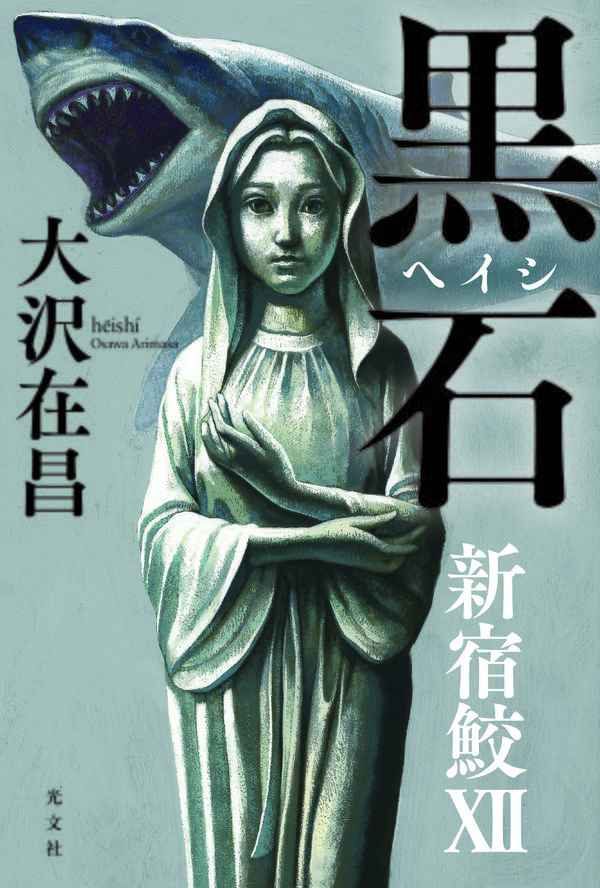
The cover of Ōsawa’s Heishi, published by Kōbunsha.
Heishi takes its title from the story’s villain, a hitman employed by the head of a mysterious criminal syndicate grappling with an internal power struggle. The killer grabs Samejima’s attention with his unusual choice of weapon, but the novel is also notable for focusing on an organized crime gang composed of zanryūkoji, descendants of Japanese war orphans, rather than the usual yakuza antagonists.
Ōsawa explains that he was intrigued by the idea of using zanryūkoji, who in the novel form a network called Jinshi. “Members are second or third generation zanryūkoji and so don’t identify as either Japanese or Chinese,” he says. “They exist on the fringes of society and coordinate their activities online, making them hard to pin down, like an underworld chimera.”
Standing Apart from the Crowd
Much of the enduring appeal of the Samejima series is the development of the main character amid a changing backdrop of crime. Readers have gotten to know Samejima over the course of the series,” says Ōsawa. “The stories are still crime fiction, but they portray him as a person rather than a two-dimensional character, which sets the works apart from a lot of the mystery novels out there.”
Ōsawa has accomplished this feat by avoiding a cookie-cutter format. For instance, he stopped relying on police jargon from the third novel on, saying that a boom in crime fiction in Japan had made it seem “cliche.” He has also given yakuza, the perennial bad guys, a diminishing role over time, declaring that “scenes of menacing Japanese gangsters have become old hat.”
However, pressed for what he thinks keeps readers coming back, Ōsawa is at a loss. “Samejima is a loner who doesn’t fit in with his colleagues at the police force,” he says. What he has going for him, though, is his moral compass. “He follows a code and maintains a strong work ethic. I think this appeals to people similarly toiling at faceless corporations or rule-bound organizations. They see a bit of themselves in him.”
Samejima’s world view comes to the fore in Heishi when he confronts the villain at Hibiya Park in a thrilling scene. Asked by the hitman what his beef is with criminals, Samejima retorts that he wants to right what is wrong with the world. “I can’t stomach that crooks live high on the hog by breaking the law,” he declares, “while honest folks work their fingers to the bone.”
Although Samejima is scoffed at by his adversary as a wide-eyed rube, Ōsawa insists that his idealism, as naive as it seems, is core to his strength as a character. “He’s constantly thinking about what it means to be a cop,” he declares. “He crosses lines at times, but his moral compass always guides him back.” Ōsawa adds that Samejima’s phlegmatic nature has an appeal. “No matter what the world throws at him, Samejima just grits his teeth and keeps going.”
Ōsawa on Writing
Asked about how his approach to writing has changed over his 30-year career, Ōsawa declares that he remains staunchly analog. His tools of trade continue to be a mechanical pencil loaded with 1.3 millimeter 2B lead, an eraser, and sheets of 400-square genkō yōshi (Japanese manuscript paper). “I tried a word processor early on, but my typing speed was abysmal,” he admits. “Writing by hand, I found I could crank out six to seven sheets an hour, which allowed me to quickly fill my daily quota and knock off for a drink.”
This routine changed dramatically, though, when the pandemic hit and his normal haunts closed for business. “I went from enjoying a drink almost every day for the better part of 30 years to not drinking a drop for a year and a half,” he recounts. Now instead of sitting down to his tipple, he often hops into his car and goes for a drive. Favorite destinations are Japan’s many michi no eki roadside stations, which frequently have farmers markets where he picks up some choice items. “I’ve visited every one within a 100-kilometer radius,” he boasts, adding that “seeing different places stimulates my mind as a writer.”
Ōsawa says he writes every day, unless he has scheduled to play a round of golf. His routine now is to read the newspaper first thing when he wakes up—he used to light a cigarette but has kicked the habit—and then sit down at his writing desk, working from 9:00 until 11:00. “After that, I fix myself something to eat, take a 30-minute nap, and then figure out what I’m going to do with the rest of the day.” Although his pace has slowed, he normally comes up with seven or eight pages a day. “This is enough to meet my publication commitments,” he says. One thing has not changed. “When an idea for a new story comes to me, though, I work nonstop. I don’t even take bathroom breaks.”
Unexpected Honor
In late August 2022, Ōsawa was tapped by the Japanese government for the Medal of Honor (Purple Ribbon), awarded to people who have contributed to the academic and artistic development of society. “I didn’t believe it at first,” he exclaims. He insists that he is humbled by the honor. “Apparently I’m the first mystery writer since Edogawa Ranpo to receive the award. Following in his footsteps, I hope I can serve to inspire up-and-coming mystery novelists.”
(Originally published in Japanese. All photos © Hanai Tomoko, unless otherwise noted.)
